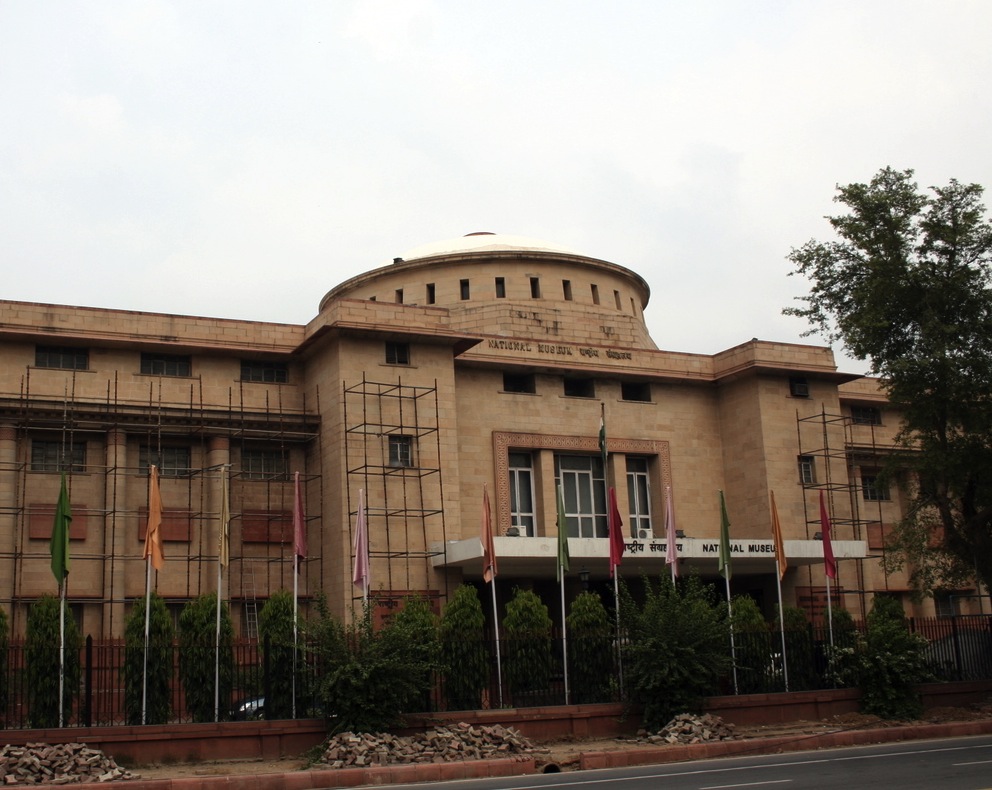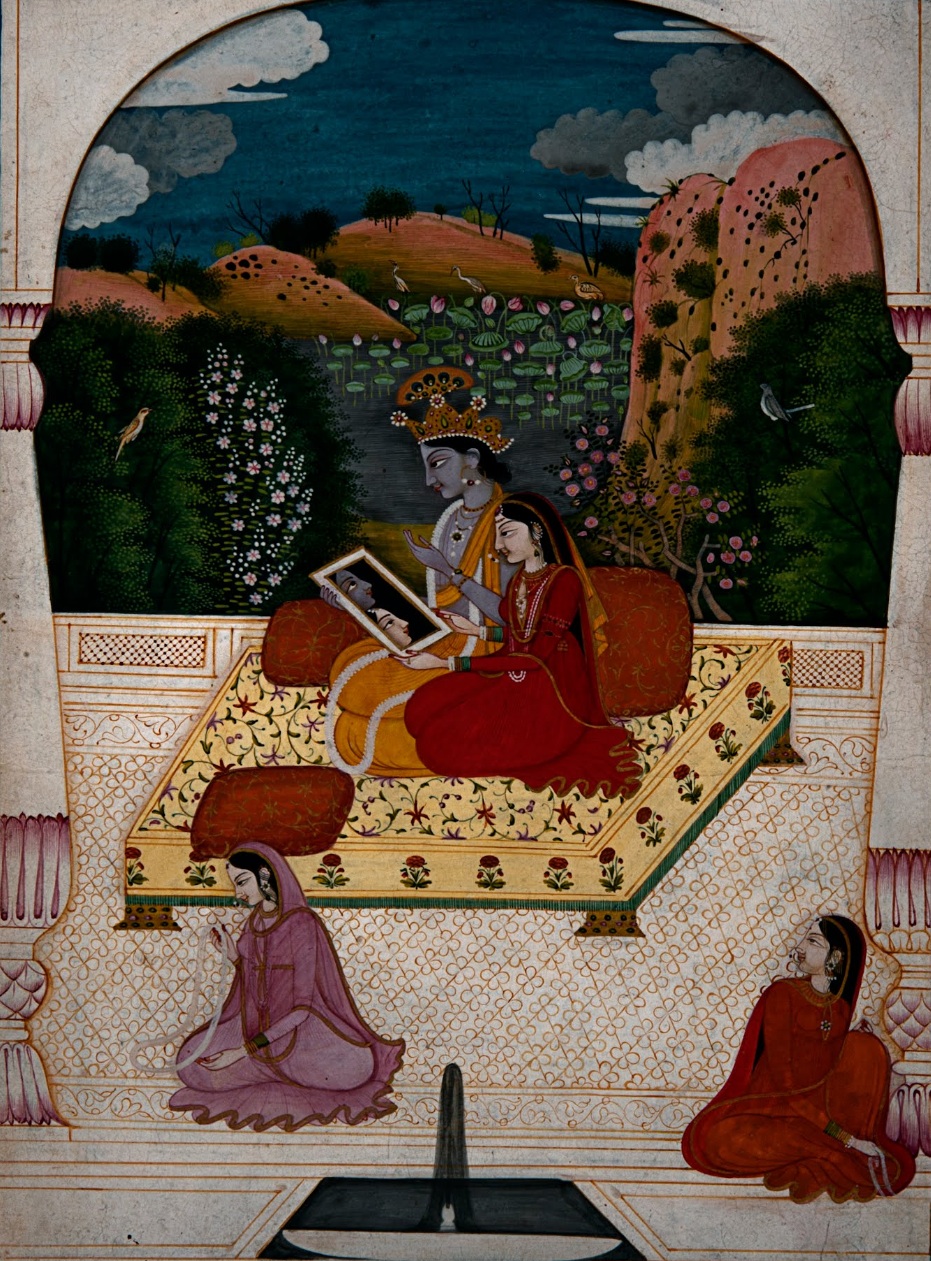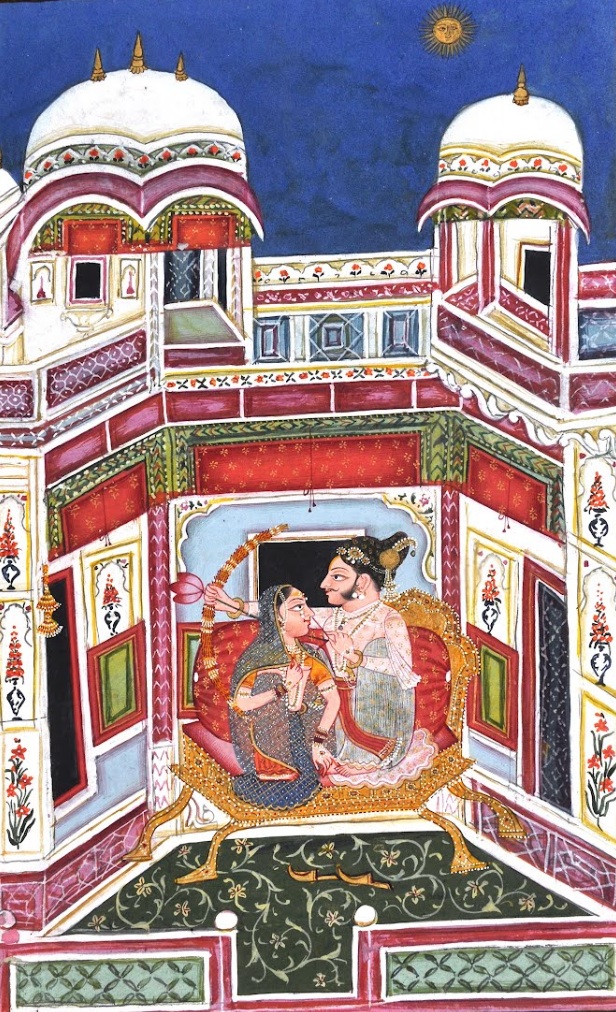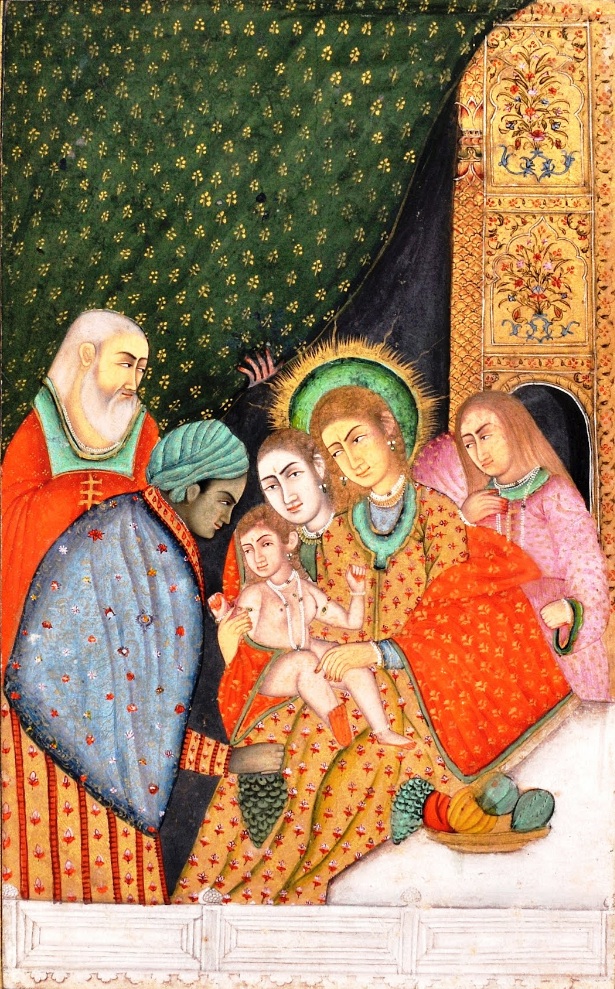Details Unknown ().jpg) | @ anonyme - Celebrations Of Krishna s Birth
Details Unknown ().jpg)
Krishna, as is popularly believed, was born in the prison of Kamsa, the ruler of Mathura. Krishna was the eighth child of Devaki and Vasudeva. At the time of the marriage of Devaki, Kamsa’s sister, it was predicted that her eighth child would slay Kamsa and free the earth form his tyrannous rule. The panicky ruler imprisoned Devaki and Vasudeva soon after their marriage.
When Krishna, Devaki’s eighth child, was born, some divine miracle worked. The prison guard fell asleep in deep slumber and the prison gates fell open. Taking it as a Divine direction Vasudeva decided to shift the child across Yamuna, to Gokula to his friend Nanda’s house. Surprisingly, Nanda’s wife Yashoda too had given birth to a girl child. Vasudeva exchanged the children and brought back to prison Yashoda’s daughter.
In the morning the news of Yashoda bearing a son had spread all around in Braja.Nanda’s clansmen and people of Braja, the trumpets blowers and the drummers, and seasoned old nurses gathered at Nanda’s residence. Nanda, like a Mughal noble in Mughalia costume, is shown receiving all and accepting the auspicious grass, dhruv, as their good wishes distributing sweets to all. In the entire vegetation dhruva alone is such specie which never dies, never dries and never rises so high as it has ever to fall. Hence, dhruva symbolizes humble long life presented on the occasion of a child’s birth.
The painting has four compartments. Inside the house, Yashoda, with a scarf tied traditionally on her forehead and the new born Krishna in her lap, is receiving advice of the old nurse and dhruva from young ladies. In a corner a band of musicians is playing on musical instruments. It is a fine, colourful, balanced painting full of action and activity.National Museum, Delhi Celebrations Of Krishna s Birth (1785 AD - 1790 AD)Details Unknown () (E)
Krishna, as is popularly believed, was born in the prison of Kamsa, the ruler of Mathura. Krishna was the eighth child of Devaki and Vasudeva. At the time of the marriage of Devaki ... |


, New Delhi Hiraman Tota Mid 20th CenturyDetails Mohammed Abdur Rahman Chughtai.jpg)
, New Delhi Hiraman Tota Mid 20th CenturyDetails Mohammed Abdur Rahman Chughtai.jpg)
, New Delhi Rasa Lila 20th CenturyDetails Kshitindranath Majumdar.jpg)
, New Delhi Rasa Lila 20th CenturyDetails Kshitindranath Majumdar.jpg)
, New Delhi Toilet Early 20th CenturyDetails Hemendranath Majumdar.jpg)
, New Delhi Toilet Early 20th CenturyDetails Hemendranath Majumdar.jpg)
, New Delhi Woman Holding A Fruit Late 19th CenturyDetails Raja Ravi Varma.jpg)
, New Delhi Woman Holding A Fruit Late 19th CenturyDetails Raja Ravi Varma.jpg)
.jpg)
.jpg)
.jpg)
.jpg)
.jpg)
.jpg)
Details Unknown ().jpg)
Details Unknown ().jpg)
Details Unknown (detail1).jpg)
Details Unknown (detail1).jpg)
Details Unknown (detail2).jpg)
Details Unknown (detail2).jpg)
Details Unknown (detail3).jpg)
Details Unknown (detail3).jpg)
Details Unknown ().jpg)
Details Unknown ().jpg)
Details Unknown (detail).jpg)
Details Unknown (detail).jpg)


.jpg)
.jpg)
.jpg)
.jpg)
Details Unknown ().jpg)
Details Unknown ().jpg)
Details Unknown (detail1).jpg)
Details Unknown (detail1).jpg)
Details Unknown (detail2).jpg)
Details Unknown (detail2).jpg)
Details Unknown (detail3).jpg)
Details Unknown (detail3).jpg)




.jpg)
.jpg)
.jpg)
.jpg)
Details Unknown (detail).jpg)
Details Unknown (detail).jpg)
Details Unknown.jpg)
Details Unknown.jpg)
Details Unknown.jpg)
Details Unknown.jpg)
Details Unknown.jpg)
Details Unknown.jpg)
Details Unknown.jpg)
Details Unknown.jpg)
Details Unknown.jpg)
Details Unknown.jpg)
Details Unknown ().jpg)
Details Unknown ().jpg)
.jpg)
.jpg)
.jpg)
.jpg)
.jpg)
.jpg)
.jpg)
.jpg)
.jpg)
.jpg)
.jpg)
.jpg)


Details Unknown ().jpg)
Details Unknown ().jpg)
Details Unknown (detail).jpg)
Details Unknown (detail).jpg)
Details Unknown ().jpg)
Details Unknown ().jpg)
Details Unknown (detail).jpg)
Details Unknown (detail).jpg)
Details Unknown.jpg)
Details Unknown.jpg)
Details Unknown.jpg)
Details Unknown.jpg)
Details Unknown.jpg)
Details Unknown.jpg)
Details Unknown ().jpg)
Details Unknown ().jpg)
Details Unknown (detail).jpg)
Details Unknown (detail).jpg)


Details Unknown.jpg)
Details Unknown.jpg)
Details Unknown.jpg)
Details Unknown.jpg)
.jpg)
.jpg)
.jpg)
.jpg)
.jpg)
.jpg)